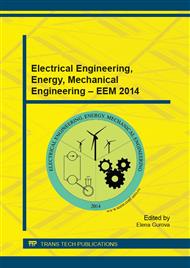p.507
p.513
p.519
p.525
p.529
p.537
p.542
p.546
p.552
Experimental Study of Geometrical Parameters of Abrasive Grains in Modeling their Cutting Edges with the Surface of Rotation
Abstract:
In machining with grinding, it is necessary to know values of geometrical parameters of cutting edges of abrasive grains. In this paper for modeling of cutting edges of abrasive grains with rotation surfaces based on generatrix as a power function and for division cutting edges on both plowing and forming a chip, values of basic parameters BP, NP were obtained experimentally. The influence of abrasive grain size, sieve-shaking procedure, mechanical properties of workpiece and type of abrasive material on these parameters was determined. The restrictions of this model were designated. It is established that traditional parameters such as corner radius r and apex angle 2θ can be used in case of microcutting with small grain penetration depth.
Info:
Periodical:
Pages:
529-533
Citation:
Online since:
December 2014
Price:
Сopyright:
© 2015 Trans Tech Publications Ltd. All Rights Reserved
Share:
Citation:


